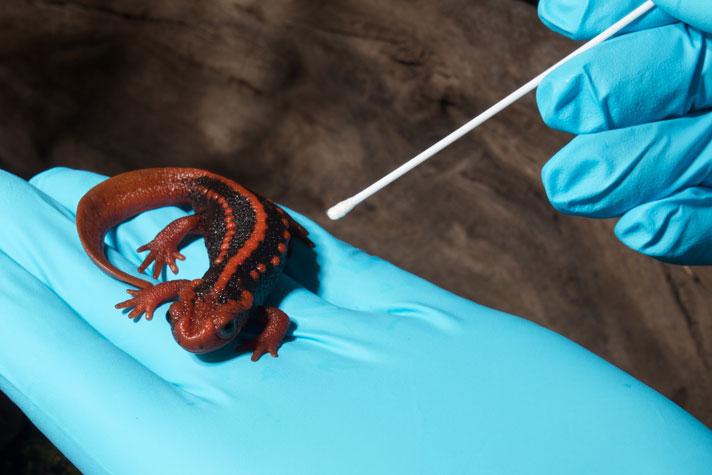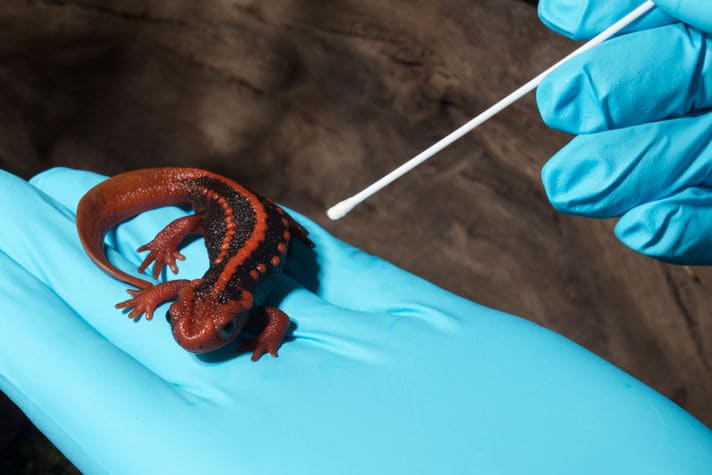A 2016 moratorium on the importation of salamanders into the U.S. seems to have helped keep Bsal out.
Scientists have determined that the salamander disease that has devastated fire salamander populations in the Netherlands, is NOT present in the U.S. pet salamander trade, and has not been detected in the United States.

Brian Gratwicke
An emperor newt gets swabbed for Bsal.
In 2016, the United States, under the Lacey Act, restricted the importation of 201 salamander species into the United States, (Read the ban here ) in an effort to prevent the spread of Batrachochytrium salamandrivorans, also known as Bsal.
The moratorium reduced the number of salamanders imported into the United States by 98.4 percent, according to the study, “Batrachochytrium salamandrivorans not detected in U.S. survey of pet salamanders.”
“When the moratorium went into effect, we did not know if Bsal was already in the United States in pet salamanders and whether we were closing the barn door after the horse had already escaped,” Brian Gratwicke, SCBI amphibian conservation biologist and the paper’s senior author said in a statement released by The Smithsonian. “Our study did not find the pathogen in pet salamander populations in the United States, which is good news for native salamanders, especially in the Appalachian region—a salamander biodiversity hotspot. It also means that we must continue to be vigilant and prevent the disease from entering the country.”
The researchers worked with keepers of salamanders in the United States, testing their amphibians for both Batrachochytrium dendrobatidis (Bd) and B. salamandrivorans (Bsal).
Want To Learn More?
Interim Ban Placed on Importation and Interstate Transport of 201 Salamander Species
Fungus That Rapidly Kills Salamanders Spreading Across Germany
The scientists received 639 salamander samples representing 65 salamander species and detected Bd in 1.3% of salamander, but did not record a single positive test for B. salamandrivorans. The scientists say that if Bsal is present in pet salamanders in the United States, the occurrence is very low.
“Working with the pet-hobbyist community on this project gave us a chance to alert this key group to a potential problem and was critical in determining whether Bsal has been imported into the United States,” said Blake Klocke, George Mason University’s Department of Environmental Science and Policy doctoral student, researching with SCBI and lead author on the study. “We hope that they will continue to be watchdogs for signs of Bsal and will implement testing and biosecurity protocols into their regular routine to prevent the possible spread of disease in the future.”



